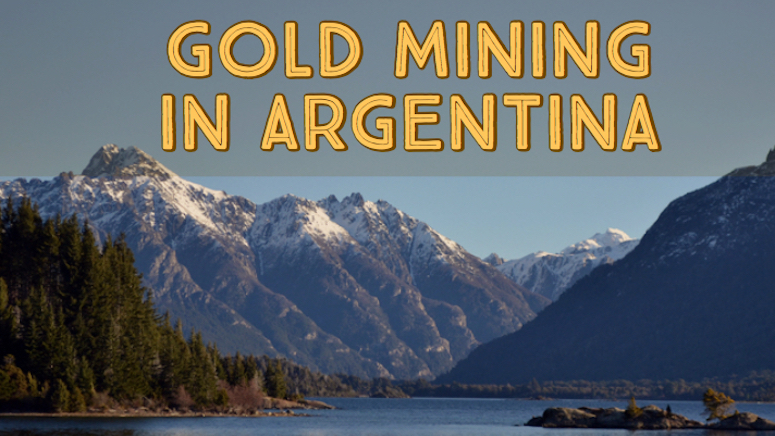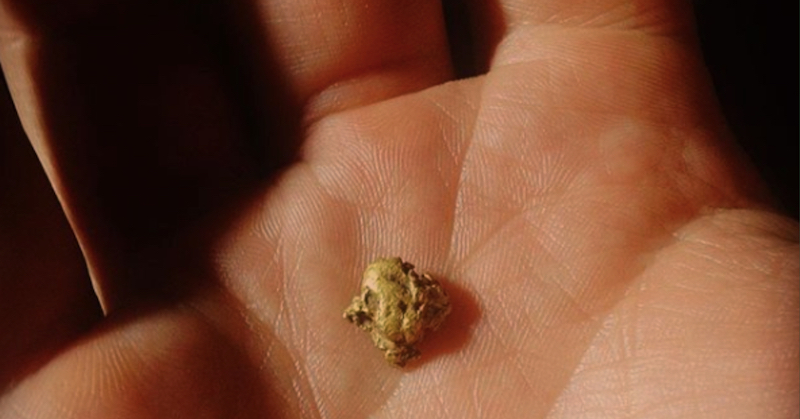
Argentina, the second largest nation in South America in terms of land area, is ranked third among the largest producers of gold in South America, behind Peru and Brazil.
The country has more than thirty volcanoes along the peak of the Andes Mountains. This violent geological activity is what contributed to the formation of the numerous gold deposits across the country. The richest gold concentrations in Argentina are generally found in the western part of the country.
Large amounts of placer gold are usually found in the rivers and streams of the Andes Mountains. The gold deposits here are widespread and are yet to be exploited to their full potential. Apart from gold, the Andean mountain range also contains, copper, silver, oil, zinc, and lithium. This is one of the most mineral-rich areas on Earth.
Historic Mining in the Andes Mountains
The mineral history of Argentina dates back as far as the 16th century. It is the Spanish silver exploration along the Rio de la Plata that put Argentina on the world map.
It was no secret that many tribes adorned themselves with precious metals in their jewelry. When the Spanish explorers arrived they were amazed at the riches being worn by these people, and they wanted it for themselves. This led to hundreds of years of exploration and exploitation in search of the riches of the New World.
The Tierra del Fuego gold rush in 1884 was a period of renewed interest in mining, with populations moving into the region from all throughout South America. Gold was discovered here here after a French ship ran aground at Punta Arenas. This caused a great deal of excitement for many years to follow.
However, there was a drop in the prices in the 1900s that halted any true progress to be had. The major rivers draining from the Andes Mountains hold prospective for placer gold deposits. The occurrence of high concentrations of these placer gold deposits is more close to the headwaters at upper elevations to the western side before they extend to the jungle. The Negro River, Colorado River, Chubut Rivers, and Salado River, as well as the numerous creeks feeding into them, have a high likelihood of holding placer gold deposits.
For thousands of years, local villagers have prospected along the shores of these rivers to collect placer gold. Even today, artisanal miners still sustain themselves by searching for hidden gold in the gravels of these rivers throughout Argentina.

The New Mining Industry in Argentina
In the recent history, there has been a significant change in Argentina’s mining industry. In 1993, the mining laws of the country were revised, which in sequence gave a significant rise in gold production. In the year before this change, only 36,000 ounces of gold had been purportedly produced in Argentina. However, this rapidly improved to over 1-million ounces of gold since more mines started gold production. Much more gold is being mined in the present day.
Argentina is among the few countries that have experienced such a dramatic rise in gold production in the recent years. The country’s local gold mining industry is thriving and continues to grow at a fast rate. There are several other deposits of gold that have not yet been discovered in Argentina. It truly does hold great potential for continued mining in the coming years.
Gold mining activity in the nation had been limited by the protectionist laws for many years. This fundamentally means that Argentina is very many years behind its neighboring countries in gold exploration and development. There are substantial untapped reserves of gold that are still waiting to be discovered in the country.
Read: Crush and Melt! How to Remove Gold from Rich Ores
And: How to Locate Gold Veins in Hard Rock
Who & Where: The Modern Miners of Argentina
Most of Argentina’s large-scale projects in gold mining in the recent times are more in the San Juan and Santa Cruz provinces. Veladero Gold Mine, operated by Barrick Gold, is one of Argentina’s largest mines. This gold mine is situated in the north-western part San Juan Province. It is estimated to have mineral reserves of about 11.3 million ounces of gold.
The second biggest gold mine in the country is the Pascua-Lama. It is located in the district of Frontera at the border of Argentina and Chile, a few kilometers from the Veladero gold mine. This gold mine is estimated to have gold reserves of about 17.8 million ounces.
In addition to these two largest gold mines in Argentina, there are also the other gold mines such as the Gualcamayo Gold Mine that is possessed by Yamana Gold and situated in Argentina’s northern San Juan province, the Cerro Negro Gold Mine, and the Cerro Vanguardia Mine that is located in the Santa Cruz province and owned by Anglo Gold Ashanti.

Expectations for the Future
Mineral exploration in Argentina is still in its infancy relative to the neighboring countries whose resources have been exhausted over the years. Since the protectionist mining laws in Argentina were overhauled in 1993, production of gold in the country gold had risen greatly from a trivial 36,000 ounces to about 1.40 million ounces in 2008. This makes Argentina to be ranked third among the most prolific producers of gold in Latin America. Brazil and Peru were the only countries to have posted better numbers at 1.55 million ounces and 5.78 million ounces of gold, respectively.
Nonetheless, of these three Latin America gold-rich countries, it is only Argentina that has seen a dramatic increase in its gold output in recent years. In sharp contrast, production in Brazil had peaked at 3.40 million ounces of gold just over twenty years ago and later dropped by almost half. The prolific numbers of Peru have also begun to decline over the last several years.
These statistics indicate the fact that in contrast to the other South American gold producing nations, gold fields in Argentina are yet to be mature in respect to their development cycles. Moreover, a lot of its buried gold wealth has up until now not seen any significant development.
This translates into a flourishing national gold sector which is still experiencing a noticeable growth curve. On the other hand, Chile’s gold production is slightly lower than that of Argentina, with its production figures being mostly stagnant for more than fifteen years despite eclipsing Argentina’s gold output for many years.
The trend of rapid growth of Argentina’s gold output is set to continue since a number of small and large Western mining companies try to monetize their discoveries of gold in an environment of high gold prices.
It is still far behind leading countries like Australia, China, Canada, South Africa, USA, and Russia that account for not less than 150 tons of yearly production. However, with the identification of gold mining fields containing in excess of 80 million gold ounces, experts predict that in the following years gold production could rise considerably, making Argentina become among the top 10 gold producing nations globally.
Next: Gold Mining in Peru
